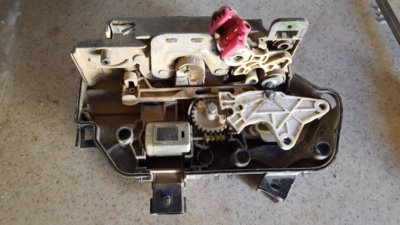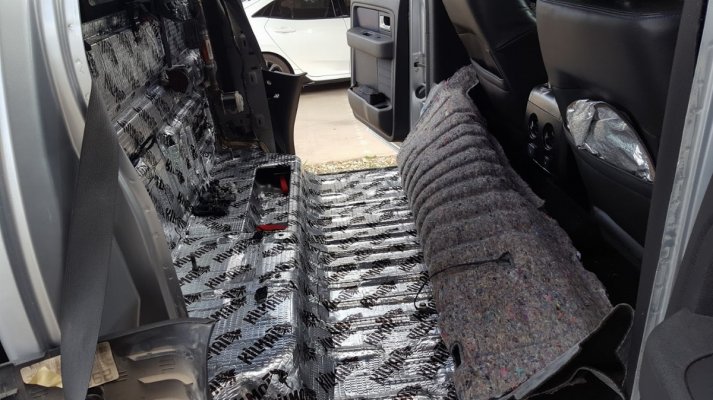Will you explain this a bit more?
Sure! My truck's got a few miles on it, day 1 when I bought it (with 152k on the clock, April of '17), the passenger rear door didn't want to unluck. That weekend I pulled out both rear actuators, hosed one down with WD40 and it seemed to work smoothly, the other I broke open and did the same, reassembled and they both worked fine. That summer I had occasional problems with them but could usually force it to unlock; not so when it doesn't feel like locking. This summer the driver's door failed once and the rears a few times, seemed to happen more often when hot (108° here in August), not cool. Googled and found numerous failures, most on here got them replaced under warranty or extended warranty, there was a rash of them after some runs so it looked like dust/dirt was a factor. Found one thread on an F150 forum and a youtube video on the same issue pointing to a resistor in the motor that prevents them from working when overheated (presumably from bratty kids pressing lock, unlock, lock, unlock a thousand times and the idea is they won't catch the ****** on fire if there's a thermal resistor...and I also think when it hits that thermal overload sometimes the driven gear parks in the way of the lever effectively preventing it from locking or unlocking manually). So I figured the hot weather here was a factor, along with dusty conditions; I decided to try the resistor flip and bag them in 1-gallon ziploc bags and see what happened. Priced them new and Motorcraft was $85 each, couldn't find a Dorman or any other aftermarket solution. Then a couple months ago they replaced all four on a work truck here at work, I nabbed the old ones and started surgery.
There's three plastic nubs, about 1/4", that hold the two halves together along with all the tabs around the perimeter. There's also one on the upright part of the white plastic cover, and the shaft of the motor's worm driven gear that keeps you from popping the cover off. I tried grinding that shaft off with a Dremel, drilling the four nubs with a 1/4" drill bit, and opened my spares up one at a time. Wasn't sure where that resistor was so the first one I destroyed the connector fitting looking for it (the motor sits on a black plastic integrated circuit that also leads to a microswitch that tells the system when the door is latched or unlatched, no resistor in that thing). Unbending the metal securing the plastic endcap on the motor revealed the little bastard, about the size of a chicklet but about 1mm thick, looks like aluminum on the top and bottom surface separated by some kind of plastic(?) thermal resistor. The contacts hit opposite sides of the resistor, but if you put it back in right (well, technically "wrong") the contacts are both on the same side, so no resistance. Used a paper clip to hold the tiny brushes of the motor apart to slip the endcap back on (there's 2 holes on the endcap that facilitate this), smashed the sides back in place and motor is good to go. Pulled all my spares apart and flipped all the contacts to eliminate the thermal resistor. On a couple there were random other shit broken inside (work trucks get abused); one had a plastic shaft sheared off for the aforementioned microswitch cam, another I probably broke during disassembly. Cleaned all the parts and kept them for spares. Here's one of mine opened up, not nearly as nasty as the work truck ones:

So armed with unresisted motors and some 1-gallon ziploc bags I started on my doors. I figured as long as I was in there I'd put Dynamat (Kilmat turned out cheaper and probably thinner but I decided worth the price and a little lighter) on the inside of the outer door and Jimmi Jammers on the door latches for a little added security. Wound up not grinding the shaft off but using a large flatblade screwdriver to pop (i.e. break) the top covers off that shaft, drilled out all the nubs, cleaned all the gears inside, put some white lithium grease on the worm gear and driven gear, swapped motors, went back together with three 1/4"x1" bolts and nuts where the nubs were, ziploc bagged them and electrical taped the bag so it wouldn't hang up on the rods. They work fine, we'll see how they do come summertime. Sorry for the lengthy explanation but if anybody wants some pictures or a how-to I can post it.





